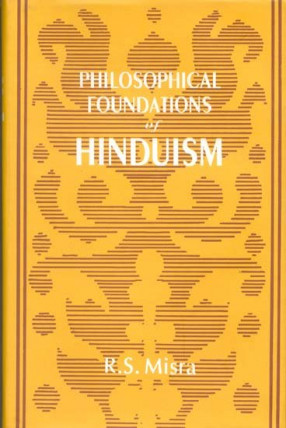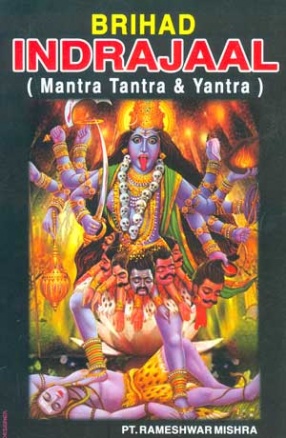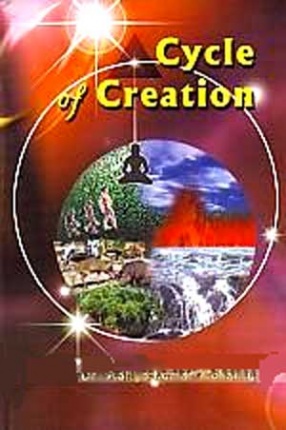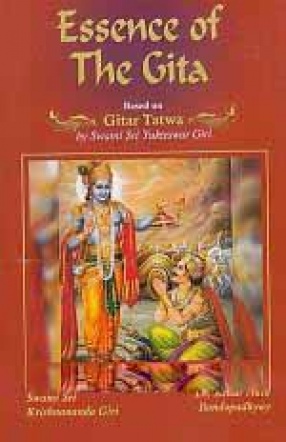Philosophical Foundations of Hinduism The Veda, the Upanisads and the Bhagavadgita: A Reinterpretation and Critical Appraisal
The Vedas and the Upanisads constitute the perennial source and foundation of Hinduism. They have provided a strong philosophical foundation to Hindu religion, culture and way of life. A most notable feature of Vedic religion or Hinduism is that philosophy and religion were never kept apart from each other. Philosophy has always provided a strong foundation to religion at the ideological level right from the Vedic period upto this day. Thus Vedic religion or Hinduism has never been dominated by theology. I have discussed this issue in the very beginning of chap. 1. Hinduism is all-encompassing in character. It has within its fold some great religions, namely, Vaisnavism, Saivism and Saktaism. They constitute different and powerful streams of Hinduism and find their ground of unity in the Vedas, the Upanisads and the Bhagavadgita. A most distinctive feature of Hinduism is that it is not centred in one sacred book, one sage or prophet and one way of religious life. It is also not governed and directed by any all-powerful organization like Roman Catholic Church. It has given ample freedom to people in respect of faith and belief and way of religious life. Another most unique feature of Hinduism is that it is based on the principle of "unity-in-diversity". In this respect, the approach of Hinduism to religion, life and culture is radically different from that of some other religions which are based on the principle of uniformity. Hinduism also represents the meeting ground of the prophetic and mystical streams of religion. Both these streams of religion find their ground of unity in the Vedas itself, including the Upanisads. The religious and philosophical thought of the Vedas and the Upanisads requires reinterpretation today. The Western scholars have presented divergent views concerning the religion of the Veda. Their general view is that the religion of the the Veda is naturalistic and mythopoeic. This view is radically different from and even opposed to the traditional interpretation of the Vedic religion. So a fresh interpretation of Vedic religion and thought is now necessary and inevitable. It is also necessary because some Western scholars, specially theologians, who have made some serious study of Hinduism have presented a partial and distorted picture of it and have characterized it as life-negating, unethical, other-wordly, mystical and so on. I have made a serious and sustained attempt in the course of the present work to show that such charges levelled against Hinduism are simply baseless and cannot be justified or validated on rational grounds. The semitic background of Western scholars seems to be largely responsible for their misinterpretation of Hinduism. Some new thought-currents in the recent and contemporary Western philosophy like logical Positivism, Philosophical analysis, etc., have posed a serious challenge to religion itself at the ideological level. They have questioned the validity of religious knowledge and the meaningful character of religious assertions. A critical analysis and evaluation of their basic principles are now necessary in order to refute the charges levelled by them against religion. I have tried to accomplish this work to some extent in part III. I have also compared the Vedic and Vedantic views about the Supreme Reality, man, world, destiny of man, etc. with that of some other religions, specially, Christianity. It has enabled me to bring into clear focus some unique features of Hindu religious and philosophical thought. The development in the study of Comparative religion in the last few decades in some parts of the world has brought the different religions somewhat closer to each other at the ideological level. So a serious and critical study of Hinduism or any religion is, in my view, not possible today without making this kind of comparative study. I developed interest in this kind of comparative study because I was formerly associated with the Chair of Comparative religion in the Banaras Hindu University. It provided me an opportunity to make some serious study not only of Hinduism but of some other religions as well. I also enjoyed privilege to meet and discuss fundamental religious and philosophical issues with scholars and professors of the Western countries who visited the university on different occasions. I was benefited in many ways by these friendly and fruitful discussions and was all the more convinced of the necessity of comparative study of religions. It enables one to have a more clear idea of the merits and shortcomings of one's own religion. The present work comprises four parts: part I deals with the religion and philosophy of the Veda. I have made a serious and sustained attempt to discuss in a comprehensive and critical way the subject- matter of the Veda, the nature and function of the Vedic deities, the philosophical thought of the Veda and some modern interpretations of the hymns of the Veda and its religious thought. The main purpose of Samhitas and Brahmanas which constitute two sections of the Veda is to reveal the nature and mystery of dharma. A most distinctive feature of the Veda is that it has been characterized by the orthodox tradition as apauruseya. It means that there is no author of the Veda. The rsis of the Veda are held by the tradition as the seers of mantras (mantradrastarah and not their authors. The Vedic religion or Hinduism is based on Revelation. The supreme truths embodied in revelation were revealed by lsvara himself to the rsis. The deities of the Veda are, according to the orthodox view, divine beings. They symbolise different powers of the Supreme Being, Isvara. The various naturalistic explanations given about Indra and other Vedic deities are largely speculative in character and do not do justice to their nature and function. The philosophical thought of the Veda is revealed with great profundity and depth in the hymns of the Rgveda. The Nasadlyasukta expounds the ultimate cause of the world and from the philosophical point of view it is a most important hymn of the Rgveda. The discovery of rta, the cosmic and moral law can also be conceived as a most profound one in those ancient days. The memorable assertion of the Rgveda that the Supreme Reality, Sat is one but the wise express it in many ways shows the extraordinary philosophical insight and depth of the ancient rsis. The Veda has presented an integrated view of human life by the concept of four purusiirthas. The Vedic attitude towards life in the world is robust and optimistic. The Samhitas and Brahmanas propound the philosophy of life-affirmation. This view is shared by the ancient Upanisads as well.
I have also made a critical analysis and evaluation of the naturalistic interpretation of the Veda and have also discussed at some length Sri Aurobindo's psychological interpretation of the hymns of the Veda. In part II, I have made a critical and detailed exposition of the religious and philosophical thought of the Upanisads. The seers and philosophers of the Upanisads have expounded the nature of the Supreme Reality, world, man and the destiny of man with great clarity and depth. I have discussed the Upanisadic view of the Supreme Reality, Brahman mainly on the basis of its exposition in the Upanisads themselves and also in the light of the views developed about the nature of Brahman and its relation to man and the world in the schools of the Vedanta. I have also made a critical exposition of the Upanisadic concept of man and man's existential situation and have compared it with the Christian view of man, with special reference to Paul Tillich. In part III, Language and Logic of the Upanisads, I have expounded the Vedantic view of religious language. I have also made a critical analysis and evaluation of some basic principles of the logical positivists and analytical philosophers who have questioned the validity and cognitive character of religious language. In my exposition of the logic of the Upanisads, I have made it clear that the Upanisadic view which unfolds the reality of Brahman in all its integrality and depth can be justified and accepted only on the basis of higher reason or logic which has been significantly characterized by Sri Aurobindo as the logic of the infinite. The dialectical reasoning suffers from serious limitations and cannot comprehend nature of Brahman in all its integrality and depth. I have shown the limitations of dialectical reasoning by making a critical analysis and evaluation of the dialectical criticism of categories made by the Madhyamika and the Advaita Vedanta. The logic of the Upanisads is essentially the logic of the Infinite. I have made a critical and detailed exposition of the logic of the Infinite in my book The Integral Advaitism of Sri Aurobindo. In part IV, I have given a critical and detailed exposition of the philosophy of the Bhagavadgita. The philosophy of life of the Veda and philosophy of spirit, atman of the Upanisads find their ground of unity in the Gita. Thus a clear picture of the religious and philosophical thought of the Bhagavadgita can be presented with clarity and depth only in the background of the Veda and the Upanisads and not in isolation. The distinguished philosophers of the Vedanta have already expounded the metaphysical views of the Gita on the basis of the Upanisads, Now it is necessary to bring into clear focus the impact of the philosophy of life of the Veda on it as well.
Get it now and save 10%
BECOME A MEMBER








Bibliographic information
R.S. Misra